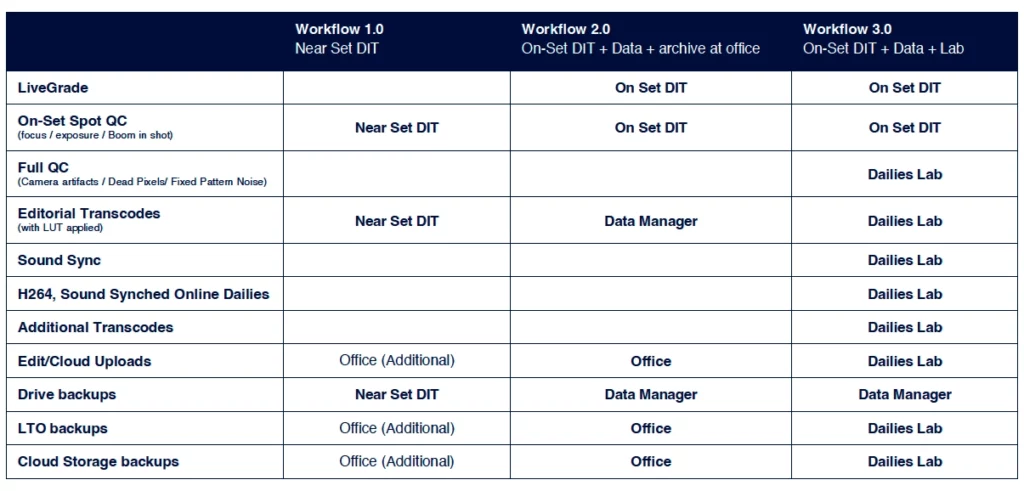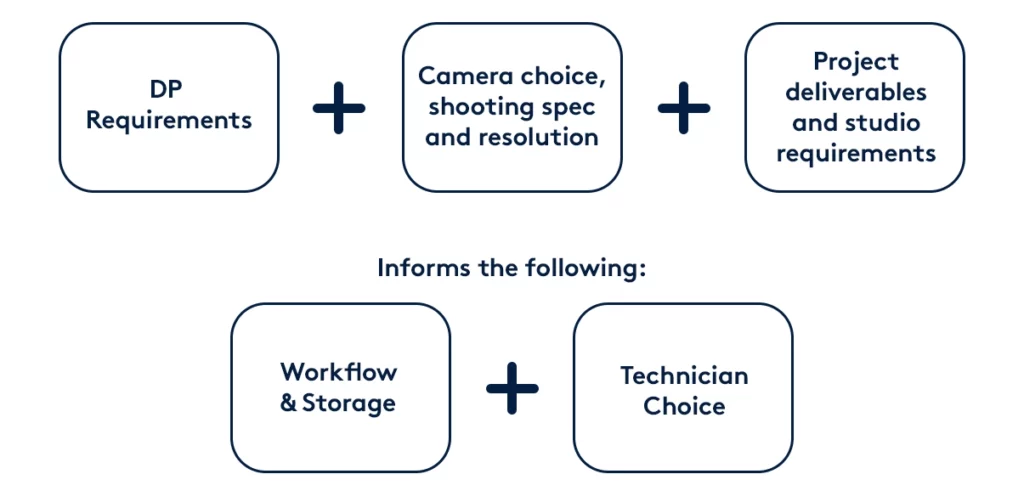How does the footage get from the camera to wherever it’s going next, and how do we make sure departments are getting the files they need?

• Defines the way that footage moves from camera through to post
• Should incorporate 3 major elements: data, colour and resolution
• Preserves metadata
• Ensures everything links up in post
• Rushes (film negatives) get taken on wrap to the processing lab
• Dunked in chemicals and are made ready for cutting in the edit
• It’s the lab that prepares what’s needed at the next stage
That’s a film workflow, and digital is no different, except instead of using a chemical bath to turn the rushes from one thing into another, we use a computer and software to change the digital file into what’s needed.
Know your On Set DIT from your Dailies Lab Operator
What’s the difference between a DIT and a Data Manager?
A data manager only manages data,
A DIT looks after the needs of a cinematographer, e.g., managing the exposure of the image, working to preserve the fidelity of the footage being captured in both a mathematical and artistic sense.
BUT depending on the project, responsibilities can overlap.
Let’s dive deeper into the roles.
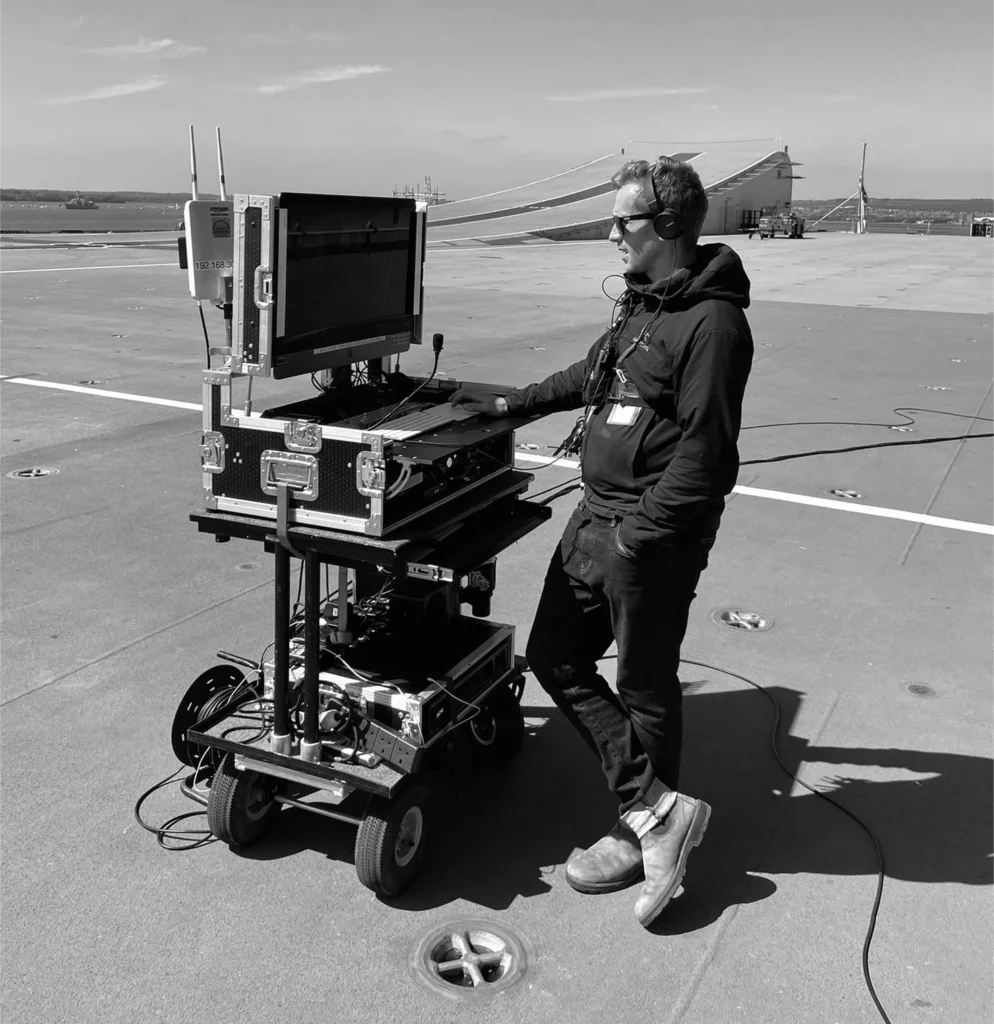
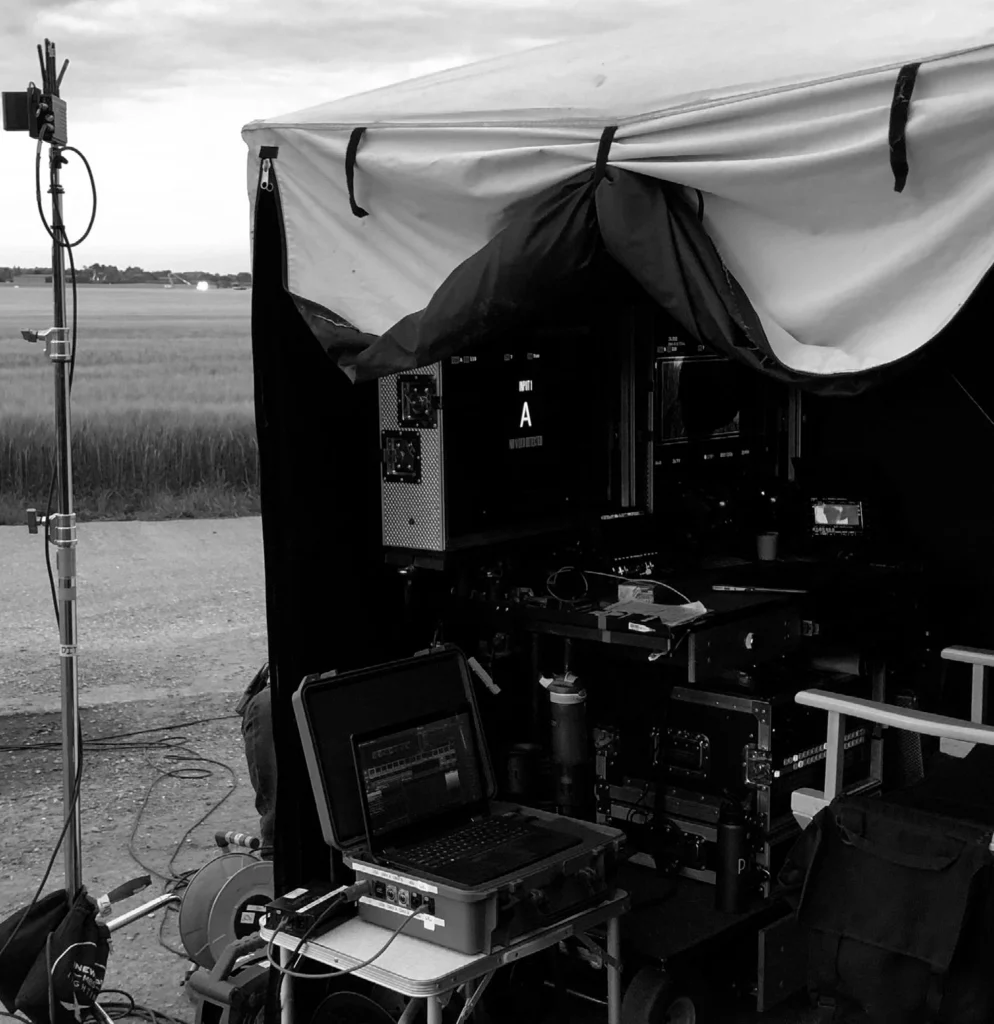
A hybrid role that sits between the On-Set DIT on-set and the Data Manager. This role is often employed when the separation of DIT and Data Manager isn’t possible e.g., due to location constraints, budget or workflow requirements.
Key responsibilities cover data management, plus some of the duties of the DIT, including workflow and camera setup, basic color management and OCF color grading.
Duties such as Live Grading and Live QC will not be possible in a Near-Set configuration.
Let’s dive deeper into the roles.
An authority on the design and execution of the Data Management Plan (or “workflow document”) for the OCF (Original Camera Files) and production sound files. They work on-set or near-set, alongside the DIT (when present), maintaining strong, clear communication with the dailies lab, editorial and post departments.
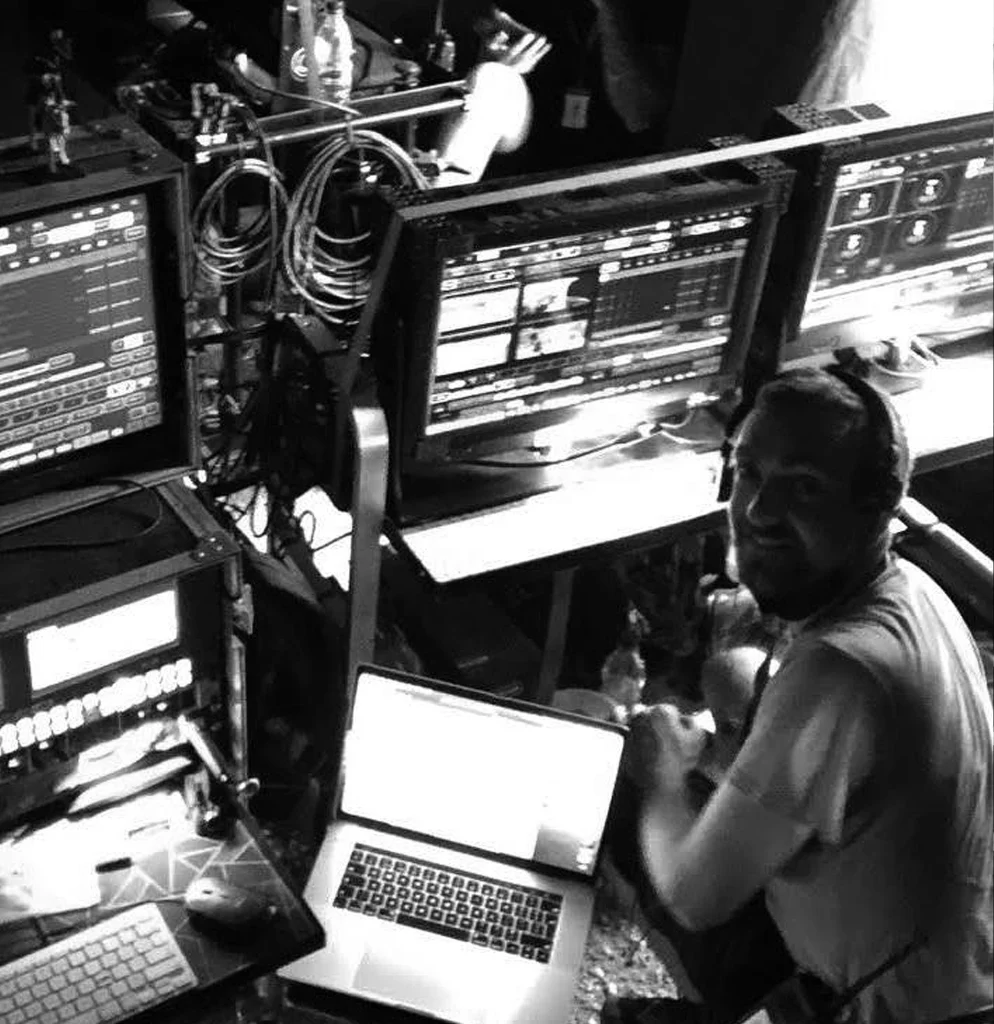
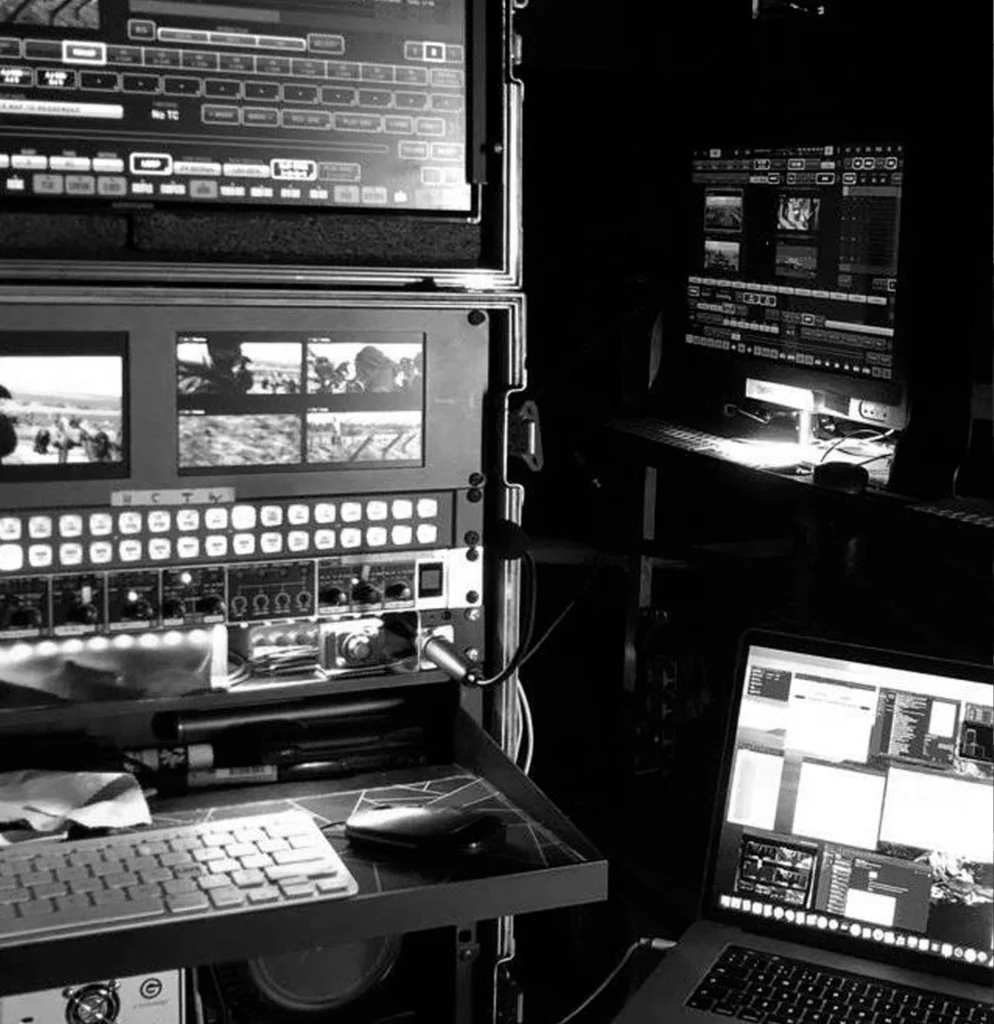
Some tasks are not recommended to be performed on set or near set due to the requirements of the work environments and the time constraints required to properly perform those tasks.
Modern technologies allow fast image processing and rendering to be accessible everywhere,evenon-set.However, the job of processing OCF into proxy files isn’t just about speed; it requires manual operations that require human focus anddedicatedtime.
Dailies labs are typically situated in facilities rather than on set. Often they are operational overnight, receiving the rushes on wrap and completing tasks for dailies viewing the following morning.
FULL AUDIO AND VISUAL QC
This is a rigorous check of the OCF that takes substantial time and a controlled environment to perform correctly.
ARCHIVING TO LTO OR CONTENT HUB UPLOAD
LTO tapes are very fragile and uploading to Content Hub requires time, a stable high speed internet connection and specialized equipment to perform correctly.
CREATION AND UPLOAD OF DAILIES VIEWING MATERIAL
External departments require access to view the previous day’s rushes via an online portal or Cloud Dailies viewing tool. These will be created from the OCF and rendered for viewing via the internet.

A DIT has the domain knowledge to all roles, whereas a Data Manager or Lab Operator is responsible for their specific area of their role only. That doesn’t mean to say that the DIT is best placed to do these roles but simply they have the requisite knowledge across all areas.
Every production should have at least an On Set DIT or a Near Set DIT, whereas the other roles are optional based on the workflow requirements.
• Cinematographer’s preference
• Skillset required
• Camera type and shooting format
• Deliverable requirements
• Location
• Budgetary restraints
• What camera(s) type and format are being used?
• Does the shoot take place in a studio or on location?
• Where is the editorial team based?
• Which digital deliverables are needed?
• Which physical deliverables are needed?
• Who is the cinematographer and what are their expectations?
• Does the show feature a high ratio of VFX?
• What are the final delivery requirements (dictated by the studio)
• Who is grading the project and what requirements do they have?
• Technician downloads and transcodes rushes near set applying a show LUT and or basic colour correction
• Typically for projects with a limited budget or minimal QC needs,i.e., reality television / documentaries / Band 2 TV
• Single deliverable: editorial files
• Hard drives copies
• NO LTO / NO Sound Sync / No livegrade
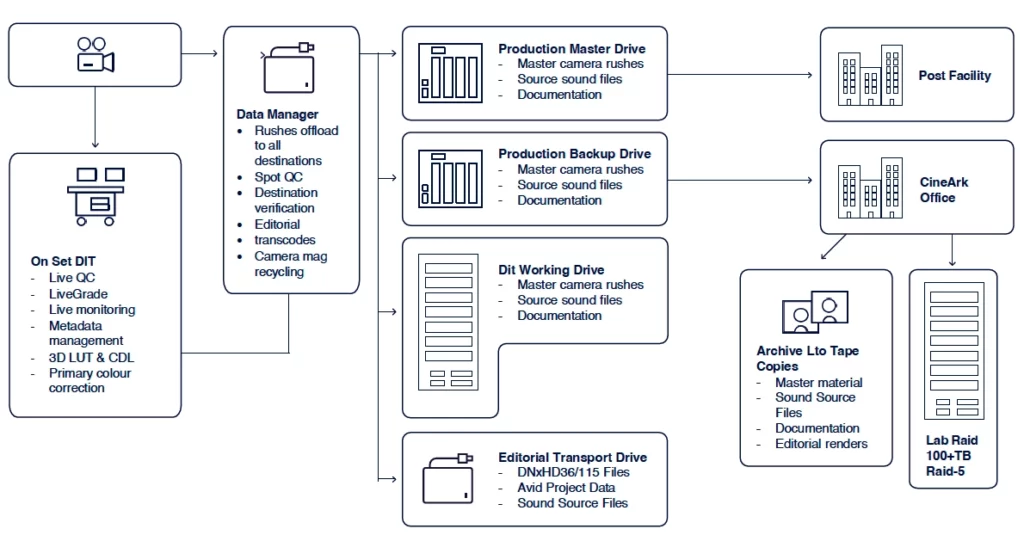
• DIT livegrade & Exposure Management
• DIT creates colour corrections to be passed on to the lab
• Data Manager creates backups near set
• Add data manager roles. E.g metadata entry QC
• Further colour corrections
• Rushes travel to digital lab on camera mags or hard drives
• Cinematographers with a need for colour corrections onset,consistent exposure monitored by a DIT using waveforms
• Multiple deliverables: editorial files, sound synced H264 files for online dailies etc
• Uploads to cloud storage possible
